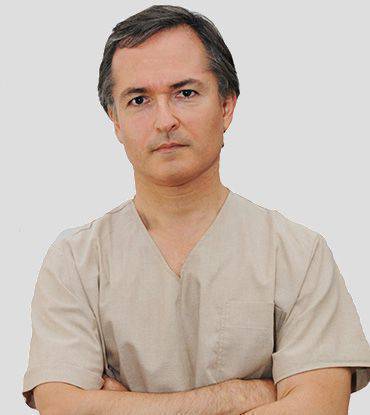Fertility Treatments in Argentina

OUR PROCEDURES
Cryopreservation
Fertility treatments are usually performed using controlled ovarian hyperstimulation in order to obtain an adequate number of ovules and embryos. If more embryos than the ones needed are obtained, these embryos are preserved using a technique known as cryopreservation, through which embryos are preserved at very low temperatures.
ICSI
Intracytoplasmic sperm injection is a laboratory procedure developed to help infertile couples undergoing IVF due to male infertility or subfertility. ICSI is a form of micromanipulation that involves the injection of a single sperm directly into the cytoplasm of a mature egg using a glass needle.
In Vitro Fertilization
The IVF process consists in fertilizing an egg with sperm in a laboratory. However, the fertilizing process is completely natural since approximately 50,000 sperm are placed with each egg which is naturally penetrated by one of them.
Oocyte Donation
Oocyte Donation is used for women who cannot produce their own eggs or produce poor quality eggs incapable of forming a viable embryo. This process involves the fertilization of the eggs with sperm from the patient's partner. The embryos develop in the laboratory and are transferred into the woman's uterus
FAQ
In the fertile population between 20 and 35 years, 85% of couples who are trying to become pregnant will conceive naturally within a year. A couple may have alterations of their fertility when is not able to conceive after having regular unprotected sex for at least one year. After this period, it is advisable to seek the help of a specialist without delay that may negatively affect the possibilities of getting pregnant. For women who are older than 35 or who may have some physical or emotional difficulties, it is advisable to seek consultation in advance.
The effect of age is a decisive factor on fertility. In the case of women, fertility begins to decline at age 35, and begins to decline dramatically beyond the age of 40.
The current vision on infertility, considers infertility a couple's issue and studies the causes in man and woman jointly, evaluating the multiple factors that could cause the infertility and the interrelation between them. Each person has a fertility potential or capacity that depends on several factors; therefore, the possibility for a couple of fertilizing depends on the total fertile potential of each component of such fertility potential. In this way, in a couple where the male with a slight alteration in his sperm production is not able to fertilize, is able to do it with a woman of high fertile potential. Many times, alterations detected are not the causes of impossibility of pregnancy, but are only a smaller possibility of achieving it. This difficulty becoming pregnant is also known as “subfertility”.
The stage of examination of the couple in order to find the possible cause of infertility is essential to determine its causes and evaluate the possibilities. The possibility of choosing the right treatment without wasting time depends on these initial examinations tests. In every case, the correct diagnosis will help determine the physical causes accurately, which will allow the couple to choose other paths to parenthood, or live with this unfulfilled desire, but the peace of mind of having made a great effort to achieve it. Initial Tests are very simple and considerably important for the diagnosis precision. Such tests include the following aspects: Ovulation. Anatomical and functional integrity of the uterus and fallopian tubes. Proper interaction of sperm and female genital tract. Sperm production and sperm quality.
A semen analysis is based on macroscopic and microscopic examination of spermatozoa present in the male semen and their conditions to achieve pregnancy. Macroscopic examination will determine volume of the ejaculate, sperm appearance, sperm viscosity and pH. Microscopic analysis focuses on sperm characteristics: concentration, motility, viability, and morphology. Biochemical analysis also evaluates the accessory sex gland (prostate gland, seminal vesicles) and epididymal functions. Microbiological Analysis is performed in order to detect infections. Immunologic testing also allows the detection of antisperm antibodies, a significant cause for infertility.
Sperm capacitation refers to the processing of the semen sample in the laboratory. It consists in the separation of spermatozoa from the seminal plasma in order to concentrate them and select those with the best motion and morphology characteristics, and therefore, have more possibilities of achieving fertilization. Sperm capacitation can be performed for diagnostic purposes only, or in order to be used later in an assisted reproductive procedure.
Infertility treatments for both men and women include: Medical Treatments based on antibiotics, drugs to stimulate ovulation, and hormones, among others, in order to correct factors that may affect fertility. Surgical treatments in cases of either male or female duct obstructions or dilations, or extraction of the myoma or adhesions, in order to recover natural fertility. Assisted Reproductive Technology are those methods used to bring female (eggs) and male (sperm) gametes closer together in order to improve the likelihood of pregnancy. These methods are basically insemination and In Vitro Fertilization and ICSI techniques.
The psychological factor always has a negative influence, to a greater or lesser extent, on the possibilities of achieving pregnancy. All emotional aspects around a significant fact such as the desire to have a child can be the cause or consequence of infertility. This is so when the couple comes with the feeling of an unfulfilled desire for a child and especially when previous experiences of inadequate professional treatment might have affected their self-esteem. Because of all these reasons, responsible and warm support of couples from the first consultation until the fulfillment of the treatment, going through the diagnosis stage, is of vital importance and primary objective of our professional task.
In nearly 30% of all infertility cases evaluated, the cause is attributed to male factors, an additional 30% is caused by female factors, and the remaining 40% is caused by a combination of female and male factors. It is usual that in approximately 10% of the cases, once all examinations have been completed, no objective cause is found. This is usually referred to as unexplained infertility or infertility due to unknown factors, where a determining factor of emotional nature is likely to be found.
According to the results obtained from initial tests and history of both partners, the specialist will be able to determine the different treatment options to be followed, with a better overview of probabilities of success and possible risks. From that moment on, and in constant dialogue with the specialist, both partners will decide on their own which treatment to choose.
The type of treatment and possibility of success for each couple will basically depend on the diagnosis obtained and age of the woman. In general, world statistics indicate that approximately 80% of patients under 35 years achieve pregnancy during the treatments. This percentage reduces by 60% in the case of women of 40 years and only 20% of women over 40 years.
These treatments are not dangerous as long as the hormones used are similar to those our own organism produces. The higher risk, completely manageable nowadays, is conceiving a multiple pregnancy. In the same way, they do not cause pain and only some minor practices are performed under local or general sedation in order to avoid any discomfort.
Babies born using assisted reproductive technologies show no difference with naturally conceived babies. Statistics reveal there are no differences between the rates of abnormalities or in the psychological profile in babies born through In Vitro Fertilization (IVF) and Intracytoplasmic Sperm Injection (ICSI) and those naturally conceived.
These type of treatments, performed using cutting-edge techniques and instruments, medicine and supplies of the highest quality, and under extreme biosafety conditions, are often expensive; therefore, it is impossible to predetermine the cost of the treatment without the evaluation of our fertility doctor.
The possibility of not achieving the desired results after the first attempt exists. In this way, it is essential to try to keep expectations realistic a priori in charge of professional guidance and detect the causes of an unsuccessful treatment in order to optimize the possibilities of a future opportunity as well. In any case, not only the highest degree of professionalism but also personalized care and emotional support from the physician and his team are essential to assist the couple on their way towards the fulfillment of their desire.
Gustavo Gallardo, M.D.
Professional Medical License: 6273
Specialty License: 7809

- Specialist in Gynaecology and Obstetrics
- Certified in Reproductive Medicine and Reproductive Biology, Pierre et Marie Curie University, Paris, France.
- Certified in High-Risk Pregnancy, Pierre et Marie Curie University, Paris, France.
SEND US YOUR CONSULTATION











